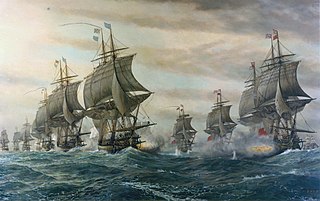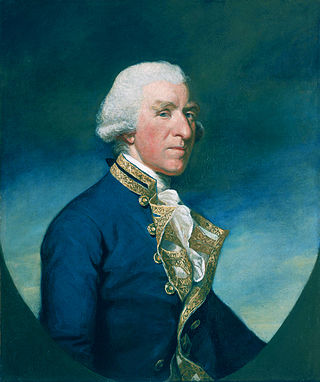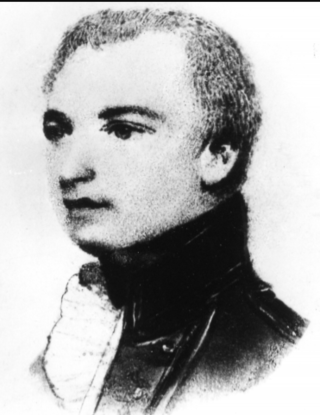Impact
On 17 September 1782, the fleet under Admiral Graves was caught in a violent storm off the banks of Newfoundland. Ardent and Caton were forced to leave the fleet and make for a safe anchorage, Ardent returning to Jamaica and Caton making for Halifax in company with Pallas. Of the rest of the warships, only Canada and Jason survived to reach England. The French prizes Ville de Paris, Glorieux and Hector foundered, as did HMS Centaur. HMS Ramillies had to be abandoned, and was burnt. A number of the merchant fleet, including Dutton, British Queen, Withywood, Rodney, Ann, Minerva, and Mentor also foundered. Mentor foundered with the loss of 31 of her 34 crew members. Altogether around 3,500 people died from the various ships.

The Battle of the Chesapeake, also known as the Battle of the Virginia Capes or simply the Battle of the Capes, was a crucial naval battle in the American Revolutionary War that took place near the mouth of the Chesapeake Bay on 5 September 1781. The combatants were a British fleet led by Rear Admiral Sir Thomas Graves and a French fleet led by Rear Admiral François Joseph Paul, the Comte de Grasse. The battle was strategically decisive, in that it prevented the Royal Navy from reinforcing or evacuating the besieged forces of Lieutenant General Lord Cornwallis at Yorktown, Virginia. The French were able to achieve control of the sea lanes against the British and provided the Franco-American army with siege artillery and French reinforcements. These proved decisive in the Siege of Yorktown, effectively securing independence for the Thirteen Colonies.

Admiral George Brydges Rodney, 1st Baron Rodney, KB, was a British naval officer. He is best known for his commands in the American War of Independence, particularly his victory over the French at the Battle of the Saintes in 1782. It is often claimed that he was the commander to have pioneered the tactic of breaking the line.

Samuel Hood, 1st Viscount Hood was an admiral in the Royal Navy. As a junior officer he saw action during the War of the Austrian Succession. While in temporary command of Antelope, he drove a French ship ashore in Audierne Bay, and captured two privateers in 1757 during the Seven Years' War. He held senior command as Commander-in-Chief, North American Station and then as Commander-in-Chief, Leeward Islands Station, leading the British fleet to victory at Battle of the Mona Passage in April 1782 during the American Revolutionary War. He went on to be Commander-in-Chief, Portsmouth, then First Naval Lord and, after briefly returning to the Portsmouth command, became Commander-in-Chief, Mediterranean Fleet during the French Revolutionary Wars. His younger brother was Admiral Alexander Hood, 1st Viscount Bridport (1726–1814), and his first cousin once-removed was Admiral Sir Samuel Hood, 1st Baronet (1762–1814).

The Great Hurricane of 1780 was the deadliest Atlantic hurricane on record, as well as the deadliest tropical cyclone in the Western Hemisphere. An estimated 22,000 people died throughout the Lesser Antilles when the storm passed through the islands from October 10 to October 16. Specifics on the hurricane's track and strength are unknown, as the official Atlantic hurricane database only goes back to 1851.

The Battle of the Saintes, also known as the Battle of Dominica, was an important naval battle in the Caribbean between the British and the French that took place 9–12 April 1782. The British victory was considered their greatest over the French during the American Revolutionary War.

Admiral Thomas Graves, 1st Baron Graves, KB was a British officer of the Royal Navy and a colonial official. He served in the Seven Years' War and the American War of Independence. He was also the Commodore-Governor of Newfoundland for a period of time.

Ville de Paris was a large three-decker French ship of the line that became famous as the flagship of De Grasse during the American Revolutionary War.

HMS Ardent was a 64-gun third-rate ship of the line of the Royal Navy. She was built by contract at Blaydes Yard in Hull according to a design by Sir Thomas Slade, and launched on 13 August 1764 as the first ship of the Ardent-class. She had a somewhat turbulent career, being captured by the French in the action of 17 August 1779, and then re-captured by Britain in 1782.

HMS Raisonnable was a 64-gun third-rate ship of the line of the Royal Navy, named after the ship of the same name captured from the French in 1758. She was built at Chatham Dockyard, launched on 10 December 1768 and commissioned on 17 November 1770 under the command of Captain Maurice Suckling, Horatio Nelson's uncle. Raisonnable was built to the same lines as HMS Ardent, and was one of the seven ships forming the Ardent class of 1761. Raisonnable was the first ship in which Nelson served.

Vice Admiral George Darby was a Royal Navy officer. He commanded HMS Norwich at the capture of Martinique in 1762 during the Seven Years' War. He went on to command the Channel Fleet during the American Revolutionary War and later in that war served as First Naval Lord when he commanded the force that relieved Gibraltar from its siege by the Spanish in April 1781.
Events from the year 1782 in Great Britain. The American Revolutionary War draws to a close.
Caton was a 64-gun ship of the line of the French Navy, launched in 1777.

Glorieux was a 74-gun ship of the line in the French Navy. Built by Clairin Deslauriers at Rochefort and launched on 10 August 1756, she was rebuilt in 1777.
Vice-Admiral Sir Thomas Bertie KSO was an English officer of the Royal Navy who served during the American War of Independence and the French Revolutionary and Napoleonic Wars.

Sir Hugh Cloberry Christian KB was an officer of the Royal Navy who saw service during the American War of Independence, and the French Revolutionary Wars.
Admiral Sir Lawrence William Halsted GCB was an officer of the Royal Navy who served during the American War of Independence and the French Revolutionary and Napoleonic Wars.

Thomas Hannaford Hurd was an officer of the Royal Navy, who rose to the rank of captain, becoming the second Hydrographer of the Navy, a Superintendent of Chronometers and a Commissioner on the Board of Longitude. Hurd Peninsula is named after him due to his role in the discovery of Antarctica.

The Battle of the Mona Passage was a naval engagement on 19 April 1782 taking place in the aftermath of the Battle of the Saintes between Britain and France during the American Revolutionary War. A British fleet under Rear-Admiral Sir Samuel Hood, pursued a small French fleet under Georges-François de Framond which had managed to escape the victorious British fleet a week earlier. The two fleets met and engaged at the Mona Passage where the British overtook and captured four French ships, two of which were 64-gun ships of the line.
The action of 5 September 1782 took place during the American War of Independence between two French Navy frigates, Aigle and Gloire, and a lone British 74-gun ship of the line HMS Hector. In a two-day battle, the two frigates severely damaged Hector and only failed to capture her when a British squadron appeared on the horizon. The French withdrew, but Hector foundered a few days later after the 1782 Central Atlantic hurricane.
HMS Germaine, was the American mercantile vessel Americain that the British Royal Navy captured in 1781 when it captured Saint Eustatius. The British took her into service as HMS Germaine, perpetuating the name of her predecessor captured earlier that year. She captured a number of small prizes in 1782. The Navy sold her in 1784.














